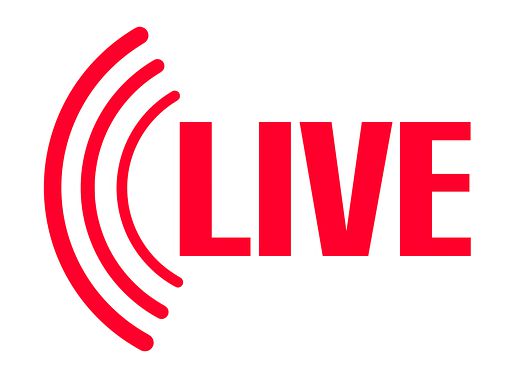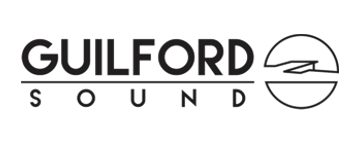Been a long time since we posted a Yawp. But it’s good that our infrastructure is ready for the eventual collapse of social media as we know it!
We’re not particularly successful grant writers, but that doesn’t stop us from trying. Whether we get the grant we’re applying for or not, the exercise of objectively examining what we’re doing, what we’ve done, and what we want to do going forward is super valuable.
We were recently awarded a project grant from the Vermont Arts Council – our first project grant award from the Council! – to dip into waters we thought that we never really wanted to… until it became apparent that we really ought to.
Live-streams. 
Lots of live-streams don’t do anybody any favors. If we couldn’t do it right, really right, we didn’t want to do it at all. Doing it right isn’t as easy as pointing a phone at the stage. Our thing is to help the performers and presenters look and sound as pro as we can… anything less is a disservice.
Excerpts from our grant proposal follow. We’re sharing it for a couple reasons: It helps ‘splain our purpose generally, and our intention for the live-streams specifically.
Stage 33 Live:
1) is a multidisciplinary incubator helping emerging local and regional musicians, language creatives, actors, and academics gain exposure and generate career capacity by documenting their original work in paid performance and presentation before a live audience;
2) disseminates the produced documentation at no cost to the participants — the aggregate online view count is [in excess of 51,000] at this writing, with plans to produce for public radio and television;
3) is a local arts-economy driver contributing to Bellows Falls’ and southeastern Vermont’s reputation as an engaging destination;
4) provides the low-income local community access to entertainment, education, and art.
The median household income in Bellows Falls is the second-from-the-bottom among Vermont’s incorporated villages — less than half the national median, with poverty exceeding 25%. The education rate is lower than average, and there are no local institutions of higher learning.
Our performances and presentations entertain, educate, and inspire an underserved and financially challenged local community; boost emerging creatives from within the community; uplift local pride; and bring outside dollars into the local economy by attracting attendees from other places. (Along with local people, four states were represented at one memorable event.)
Most of the emerging creatives we serve are too new and small for the region’s bigger performing arts centers’ consideration. Being presented professionally to an attentive, appreciative audience is a rare opportunity for them, and the documentation we produce helps them advance their careers.
To date we’ve documented more than 250 participants, including LGBTQ+, disabled people, and BIPOC, and we’re eager to serve all underrepresented groups.
In addition to the documentation’s value, featured performers and presenters receive program income that generaly meets or exceeds the recommended Fair Trade minimum wage determined by the American Federation of Musicians. We anticipate that in the endemic era of COVID-19 attendance will rise to, and eventually exceed, pre-COVID numbers.
Established performers and presenters are also welcomed, as their participation boosts the project’s visibility and perceived value.
We intend to create a permanent live-streaming infrastructure to better serve emerging creatives and the rural, low-income, often transportation-challenged regional community. If a larger audience of convenience is coincidentally reached that’s a plus but not the point.
Particular emphasis is on the word “permanent”.
Most of the larger, more well-heeled performance centers in and around our rural area used a portion of the pandemic relief funds they received to invest in web-streaming capabilities. In the absence of touring acts and individuals, they used that new power to shine more light than normal on local and regional performers and presenters.
We rejoiced.
However, now that audiences are being welcomed back into those performance centers, it appears that nearly all of them in the region, both nonprofit and for-profit, have stopped offering live-streams of their performance events — we’ve found only two exceptions. And with artists of stature from farther afield increasingly available, local and regional emerging performers and presenters are again falling by the wayside.
It’s enormously important, of course, that performance events are beginning to rebound. But it’s unfortunate that a wholesale return to business-as-usual means that people unable to travel to the venues for any of a variety of reasons, or who can’t afford in-person tickets, have lost the opportunity they briefly had to appreciate — and emerging performers to create — content on a more level playing field.
Fiscally, the decision those performance centers are making is understandable. Most live-streams don’t monetize well, if it all, especially those of limited local or regional interest. Low production values and poor marketing are a contributing factor. There’s also a pervasive supposition that web streams ding the value and ticket-sales of live performances; contrary to that belief, pre-pandemic evidence shows that a venue’s in-person attendance often increases over time if they consistently offer well-produced web streams of live events.
It should be noted that the regional performance centers that also offer educational classes are largely continuing the educational tracks online, which is terrific. That’s almost certainly an economic decision — it’s simply cheaper to do it that way than in the facility — but that’s OK. It improves participation opportunities for underserved populations.
Like other performance venues, we also pursued pandemic relief funding with an eye toward establishing a live-stream infrastructure during the shutdown. As a volunteer-run organization, most of the pandemic relief-and-pivot programs (like PPP, SOS / SVOG, and VERG) were off the table for us because institutional payroll loss was a requisite. The income we create for local and regional artists and academics that was lost wasn’t an allowable factor.
With the large performance centers now dropping the live-streams they leaned on to get through the shutdown and gatherings restrictions, and now cutting back on featuring less established performers and presenters as bigger touring artists are available again, it turns out to be even more important for us to establish live-stream capacity.
The purpose of this request is to keep opportunities to participate alive that are rapidly falling by the wayside again in our area for the under-represented, forgotten, overlooked, struggling, and ignored as the pandemic becomes endemic.
Any increase in live digital content delivery will be more than what we’re able to offer right now. We currently have no live-streaming capability.
However, our most effective mission fulfillment is already digital, in the form of videos we produce of the performances and presentations. The online view count at this writing is [in excess of 51,000]. Viewership of the archived content has been steadily rising throughout the pandemic.
Our intention is that the live-streams won’t be archived, in order to give them FOMO value and urgency; the produced documentation provides more effective impact as the permanent record. However, the footage from the live-stream cameras will be captured and used in the edited documentation — the live-stream infrastructure will be fully integrated into the overall mission fulfillment process rather than being a single-purpose one-and-done without lasting purpose and value.
Live-streams would be at the option of the performer or presenter — not all will be comfortable with it, and the decision to decline for any reason will be honored. We anticipate that the preponderance of participants will embrace the added value.
Short-term success of adding live-streaming will be any additional ears and eyes giving attention to the performers and presenters. Long-term success will be both increased viewership and in-person ticket sales over time. Our two prongs — the live part and the documentation part — are symbiotic: The success of one supports the success of the other.
Some of the necessary hardware is already in hand, and all of the necessary basic knowledge and skills.
It needs to be noted that there are inexpensive off-the-shelf live-streaming solutions available, and their quality is commensurate with their cost. Our intention in all aspects of the work is to present the local and regional emerging performers and presenters as professionally as possible to best highlight their potential and help them advance their careers. If our presentation capability is no better than they can do in their own living room, with poor sound and marginal video, they would — in plain truth — be better off doing it themselves in their living room.
If we knew then what we do now, we’d have started looking for ways to build out a web streaming infrastructure before COVID-19 was even a thing. Since the March 2020 shutdown, the subsequent gatherings restrictions, and the brief lull before the Omicron flare-up, we were able to host just 11 events. During the same period, events that would have included 89 individual participating creatives were canceled due to COVID-19. Half or more of those could likely have been converted to web streams.
At this point that’s academic — but as performance centers are coming back to life and collectively deciding to no longer stream their performance events, we’re seeing that establishing our own infrastructure is important to pursue on behalf of those we serve, both on and in front of the stage… not as an existential stopgap, but as a permanent expansion of our mission fulfillment.
From the beginning, we’d engineered the project to be able to operate at an insanely low overhead because it was the only way we could pull it off. We knew we could get through brief stretches of having zero funds — until the next insurance bill came, which would kill us.
When everything ground to a halt due to COVID-19 and we found that we were ineligible to apply for most pandemic relief programs as a result of choosing to pay the creatives before we started paying ourselves, death by insurance bill came perilously close to becoming reality.
Our operating costs and nearly all of our upgrades (including cameras, microphones, seating, and stage lights) have been primarily funded by small donations over extended periods. Those donations dried up with the majority of our events canceled for almost two years… and the local community is currently even more tapped out than usual due to the pandemic.
COVID-19 was a rigorous test as event after event after event was canceled. Both morale and the bank account sunk farther and farther until they hit bottom, then started getting swallowed up in the silt. To our great relief and gratitude, in August 2021 we were awarded a small Cultural Recovery Grant by VAC to catch up on deferred bills and equipment maintenance, support reopening, and provide a cushion while we get our feet back.
We spent a considerable amount of time and effort during the shutdown working on behind-the-scenes things, including remixing and re-editing a lot of the documentation with the improved tools that we’ve acquired along the way, streamlining our process and establishing improved baselines. We also found cost-free ways to fine-tune our equipment and make adjustments in the performance space. As a result, what we do going forward will be even better.
During the long darkness we managed to gain steady traction on Facebook, Instagram, newsletter subscriptions, and most particularly on YouTube.
Indications are that in-room audience momentum will resume its upward trajectory if COVID-19 variants continue to wane in severity and vaccinations continue to be effective.
Performer and presenter enthusiasm has absolutely grown. Our wait-list is in excess of the number of dates that will be available on our upcoming calendar. To have demand exceed our capacity is gratifying, but alarming.
 Performers looking for dates: We’re in a tight spot. Maybe it should be gratifying, but it’s heartbreaking. Our wait-list of performers and presenters who have very kindly asked us to be in touch when we have dates available — a number of them whose dates here were nixed by COVID-19 — exceeds the number of dates we’re going to have available in 2023.
Performers looking for dates: We’re in a tight spot. Maybe it should be gratifying, but it’s heartbreaking. Our wait-list of performers and presenters who have very kindly asked us to be in touch when we have dates available — a number of them whose dates here were nixed by COVID-19 — exceeds the number of dates we’re going to have available in 2023.


















